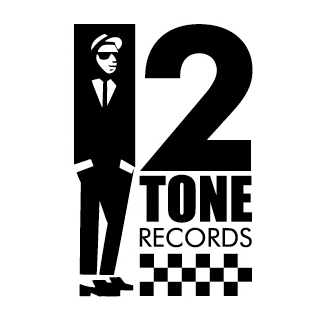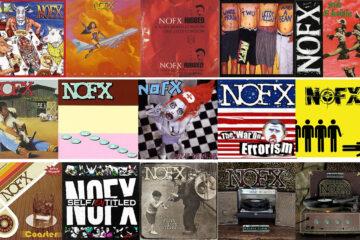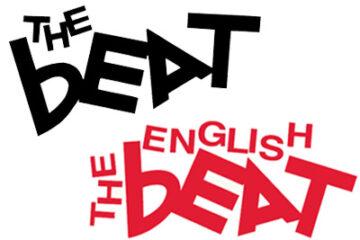Ska music has been around for a very long time and it’s one of those rare genres that gets described in terms of waves or generations.
So…
- Why is that?
- What do the waves actually mean?
- Why aren’t more music genres defined by waves?
Well, let’s start at the beginning.
Ska music 1st wave
The beginning of ska music was in the late 1950s, when sounds from different cultures started to be combined together and developed into something new.
American rhythm and blues started to be heard in the Caribbean, specifically Jamaica, and eventually combined with calypso and mento music, creating a whole new sound.
A new beat emerged that mixed the shuffling rhythm of American pianist Rosco Gordon with Caribbean folk influences, most notably the mambo of Cuba and the mento, a Jamaican dance music that provided the new music’s core rhythm.
The boogie-woogie piano vamp characteristic of New Orleans-style rhythm and blues was simulated by a guitar chop on the offbeat and onomatopoeically became known as ska.
Britannica
As well as the guitar sound (and possibly more importantly) was the horn section. The guitar being backed by trombones, trumpets and saxophones made for a very filled out and a distinctive sound, known as ska.
The vocals were more varied however, with artists opting to shout, chant or skat along with the music.
“Ska in its inception was meant to get people to dance — so much so to the point where it developed its own moves called ‘Skanking.’
It’s essentially the ‘running man’, but with the addition of your arms punching the air as you kick in time to the guitar. “
Nat Szczepanski
Popular First Wave Ska bands
Some of the more more well-known bands of this time are Toots and the Maytalls, Prince Buster and The Skatalites.
The songs are a way to get audiences on their feet and dancing, without too much vocals getting in the way. Prince Buster would often scat more than say anything, and the Skatalites oftentimes had no vocals at all in their songs.
However, after the boom of the 1960s, ska music started to wane in popularity by the late 60s/early 1970s.
Ska music 2nd wave
The second wave of Ska was a revival of sorts, as the first wave had started to lose peoples interest. Instead, pop and rock music were becoming much more popular.
Like the origins of ska, mixing American and Caribbean cultures together, the second wave was similar, this time merging the first wave of ska with the emerging punk sound of the 1970s.
The first wave of ska was very popular with British skinheads and mods.
They then took the sound and merged it with the punk sound, keeping the tradition of taking ska music and mixing it with their own music tastes to make something new.
This wave of ska, which at the time was known as Two-Tone or 2 Tone, had the offbeat guitar sounds and horn section of first wave ska, but mixed in with a faster, sharper sound from punk rock.
The name Two-Tone came from 2 Tone Records, who would produce and a lot of popular ska music of the time. Two tone records was started by Jerry Dammers of The Specials. Who were also (unsurprisingly) a very popular ska band of the time.
The name of 2 tone records reportedly was a reference to the fact the band had both white and black musicians.
Another differentiator of ska music of the time was that it was also (usually) more politically charged, often raising awareness of racism which was a major issue in the country at the time.
The reason it get’s called the second wave of Ska nowadays is that it came about a long time after the first wave had lost appeal, and the sound had changed drastically, while still being disticntly similar to the first wave of the 1960s.
Popular Second Wave Ska bands
Some of the more popular and succesful 2nd wave ska bands include The Specials, Madness and Bad Manners.
Madness were also one of the main reasons that ska bands are now associated with the term ‘Pick it up!’.
Once again however, Ska music started to fade from popularity. It never quite went away, but around the late 1980s, it certainly started to lose the widespread appeal it had.
After this however, Ska music went rather quiet again for roughly another decade…
Ska music 3rd wave
The third wave of ska happened in the late 1980s, and become very popular in the mid 1990s.
Around this time is also when the idea of ‘waves’ of ska was coined. Albino Brown coined the term ‘3rd wave ska’ to help differentiate the sound changes of ska music over the years.
I am known for coining (1989) and catalyzing the “3rd Wave Ska” movement along with assisting such multi-platinum bands as No Doubt/Gwen Stefani and Sublime (and the Orange County/The O.C. ska scene e.g., Reel Big Fish, Save Ferris, The Aquabats).
Albino Brown
The sound of ska changes drastically during the 3rd wave. The tempo is again quicker, the vocals get extended again to become more like pop and rock songs (As opposed to the 1st and 2nd waves of ska, where the vocals were often less prominent), and the horns section of the music becomes the main proponent.
The horn section prominence is the principal difference between 3rd wave ska music from pop-punk of the time, although Ska-punk is a different style of music despite being very closely related to 3rd wave ska and pop-punk.
Popular Third Wave Ska bands
Some of the biggest and most succesful bands of this wave are Less Than Jake, Reel Big Fish and The Mighty Mighty Bosstones.
In the 90s, Ska music was possibly as big as Ska music has ever been, thanks for prominence of the music in popular video games like THPS, and Sonic the Hedgehog, oddly enough.
The 3rd wave of ska was huge in the mid-to-late 1990s, and though it’s popularity has again faded as with the first two waves, 3rd wave ska music still has a very dedicated fan base.
Will there be a 4th wave of ska?
A wave or generation of music generally means that there has been such a significant change in the music style, that the current music no longer fits under one umbrella term.
This hasn’t really happened with ska music, as there haven’t been any significant changes since the 1990s.
For years people have argued whether Streetlight Manifesto is the first band in the 4th wave of ska, or if they even classify as ska at all.
There are also niche subgeneres that incorporate ska music, like Ska-core, which is ska music played with heavy metal breakdowns, or Christian Ska, which is exactly what it sounds like.
However, since this is still so niche and not the dominant form of ska music being played, its unlikely this will be recognised as the 4th wave of ska.
There are still new, popular ska bands, like The Interrupters and Skatune Network, but they still play within the realm of 3rd wave ska.
Why doesn’t more music get defined by waves?
Well, the short answer is that they do, but that it’s generally easier to discuss sub-genres than it is to talk about the waves.
In the 80s we had the New Wave of British Heavy Metal, which was a significant change to how a lot of popular heavy metal music sounded,
However, heavy metal is such a broad genre that discussing it ins aves would mean grouping together a lot of very different sounding bands as one.
After the British new wave of heavy metal, the 90s saw grunge, thrash, post-hardcore and rap metal, but to describe all of those as one wave of heavy metal would be reductive and meaningless.
Within Ska music however, there haven’t been many significant changes in the past 50 years. This means that when there is a change, it marks a drastic change in the style of the music being played, even though it is still Ska at its core.
Wrap up
Ska music has a long and interesting history as the music becomes influenced by and connected with different styles of music.
The idea of ‘waves’ of Ska music is more of a label to help simplify conversations rather than being based on any serious, scientific reasoning.
There are people who don’t agree with the three waves I have described here, and there are others who argue that a 4th and even 5th wave of Ska have already happened.
In fact, researching the 3rd wave of Ska was difficult because its the least well-defined of the three, and despite being arguably the most succesful, it is also the least written about.
All we can do is try to group common threads together and explain the general style of the Ska music at different times.



